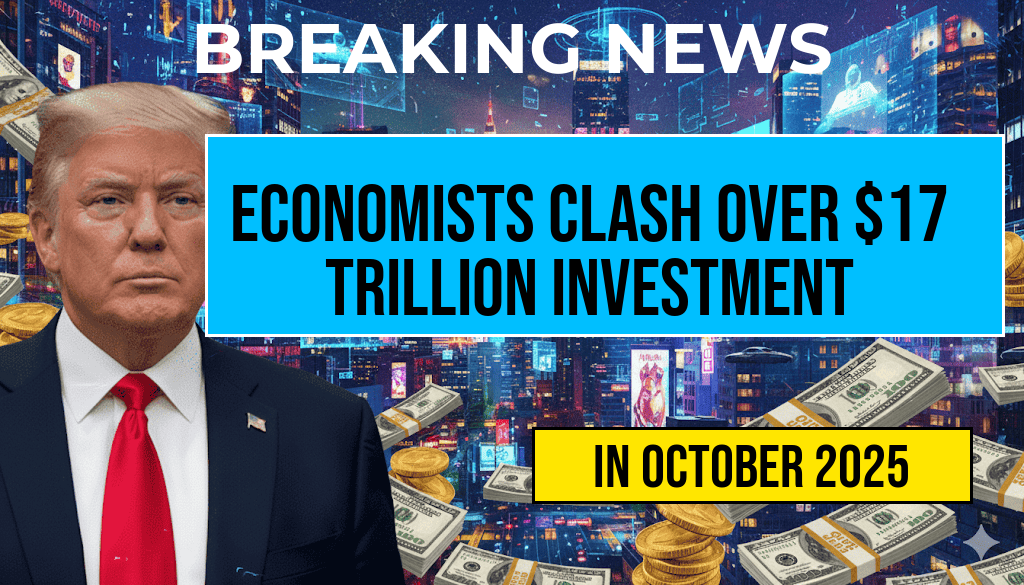Amid ongoing debates about the scope of former President Donald Trump’s global economic influence, estimates of his total international investments have become a focal point for economists and policymakers alike. Recent figures suggest that Trump’s worldwide financial footprint could amount to as much as $17 trillion, a sum that has ignited fierce disagreements among experts over its accuracy and implications. While some analysts view these estimates as an overreach rooted in speculative assumptions, others argue that they reflect a substantial and often overlooked dimension of Trump’s post-presidential economic activities. The controversy highlights broader questions about transparency, valuation methods, and the influence of private wealth on global markets, prompting calls for clearer disclosure standards in the realm of high-net-worth individuals.
Dissecting the $17 Trillion Estimate
The figure of $17 trillion originates from a combination of publicly available data, private disclosures, and sophisticated modeling techniques employed by certain economic think tanks. Proponents of the estimate suggest that Trump’s investments span a diverse array of assets, including real estate holdings, business ventures, licensing agreements, and international partnerships. These assets are believed to generate significant cash flows and influence, especially in markets such as Asia, Europe, and the Middle East.
Critics, however, caution against taking these numbers at face value. They argue that the estimation methodologies often rely on assumptions that may inflate the actual figures, such as assigning market values based on potential revenues rather than current asset worth. Moreover, much of Trump’s wealth is held in private entities or assets that lack transparent valuation, complicating efforts to arrive at a definitive total. The debate underscores the difficulty of accurately quantifying private wealth, especially when it extends across multiple jurisdictions with varying disclosure norms.
Economic Implications and Global Reach
Influence on International Markets
- Investment Footprint: If accurate, Trump’s estimated investments could influence local economies and international markets, affecting property prices, employment, and trade flows in several countries.
- Diplomatic Leverage: Extensive international holdings may afford Trump informal leverage in diplomatic negotiations, as economic ties often translate into political influence.
- Market Perception: The perception of such vast wealth can impact investor confidence and global financial stability, especially if uncertainties about valuation persist.
Policy and Regulatory Challenges
Experts highlight that the opacity surrounding private investment totals complicates regulatory oversight and tax compliance. Without standardized reporting requirements for private assets, assessing the true scale of individual influence remains challenging. Some argue that greater transparency could help policymakers better understand the interconnectedness of private wealth and global economic health.
Expert Perspectives and Controversies
Supporters’ Viewpoints
Advocates for the higher estimates contend that Trump’s international investments are a significant yet underappreciated driver of global economic activity. They emphasize that even if some figures are approximations, the overall trajectory indicates a substantial economic footprint that warrants closer scrutiny. These analysts point to Trump’s extensive branding deals, licensing agreements, and property holdings as evidence of a far-reaching influence that extends beyond national borders.
Critical Voices
On the other side, critics argue that the estimates are overly optimistic or speculative, often relying on projections rather than concrete data. They caution that inflating private wealth figures can distort public understanding and lead to misguided policy debates. Financial transparency advocates also emphasize the need for stricter disclosure standards to prevent potential conflicts of interest and ensure accountability.
Potential Repercussions for Future Policy
The controversy over Trump’s global investment totals underscores the necessity for clearer financial disclosures among high-net-worth individuals, particularly those with international assets. Policymakers are increasingly calling for reforms to improve transparency and prevent the concealment of wealth that could influence markets or policymaking processes. As global markets grow more interconnected, understanding the true scale of private investment portfolios becomes crucial for maintaining economic stability and fostering fair competition.
Summary Table of Key Figures and Sources
| Estimate | Source | Notes |
|---|---|---|
| $17 trillion | Think Tank Report (2024) | Based on modeling of private assets and licensing deals |
| $8 trillion | Financial analysts’ conservative estimate | Adjusted for transparency and valuation uncertainties |
As discussions continue, the debate over the true extent of Donald Trump’s global investments exemplifies the complexities inherent in measuring private wealth at such a scale. Transparent, standardized reporting will be essential for policymakers seeking to navigate the economic and diplomatic ramifications of these assets in an increasingly interconnected world. For further context on the scope of private wealth valuation, see Asset Valuation.
Frequently Asked Questions
What is the main controversy surrounding Trump’s estimated global investment totals?
The controversy centers on the accuracy and methodology used to estimate Trump’s global investments, with economists debating whether the reported $17 trillion figure is an overestimate, underestimate, or a valid reflection of his actual financial influence worldwide.
How do different economists assess Trump’s impact on the global economy?
Economists have varying opinions; some argue that Trump’s investments and policies have significantly boosted global markets, while others believe his approach has introduced risks and uncertainties that could hinder long-term economic growth.
What factors contribute to the difficulty in estimating Trump’s global investment totals?
Estimating Trump’s global investments is complicated by factors such as complex ownership structures, private holdings, international assets, and differing accounting standards, making it challenging to arrive at a precise figure.
Why is the $17 trillion figure considered significant in economic discussions?
The $17 trillion estimate highlights the substantial scale of Trump’s global financial influence, prompting debates among economists about the implications for international markets, policy decisions, and economic stability.
What are the potential implications of these differing estimations for policymakers?
Discrepancies in estimating Trump’s global investments can affect policy decisions related to international trade, investment regulations, and economic strategy, emphasizing the need for accurate data to inform effective policymaking.

Leave a Reply